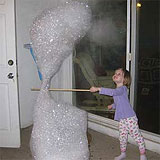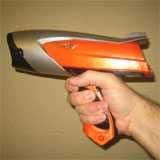Which Type of Cup Keeps Cold Drinks Coldest?
In September I checked the temperatures of cold drinks around town. A Slurpee, an Icee, a milkshake and a Jamba Juice. All of these have ice in them, and are served at a sub-zero (°C) temperature.
The Jamba Juice smoothie was the least cold, at a mere 29°F, but it had a redeeming quality: a styrofoam cup.
The styrofoam is pretty thin: 2.8 mm.
The other drinks were sold in non-insulated cups, probably designed to sell drinks more than to perserve drinks.
The styrofoam was almost certainly going to be a better cold-drink holder, but how much better would it be?
To test the cups, I filled each with 22 ounces of water and froze them solid.

Unfortunately, the styrofoam was not strong enough to withstand the expansion forces of the solidifying ice. It broke. Unwilling to buy another $4.85 smoothie for this experiment, I dug one out of the Jamba Juice trashcan recycled one. On this second attempt, I froze just a few ounces of water at a time, giving the ice a chance to expand into open air instead of crushing through the styrofoam shell.
It almost worked. The sides were solid, but there were a few pinholes in the bottom of the cup. This would have to do.
The experiment I was trying to conduct was to test how long each of these cups would insulate a block of ice from melting.
Due to previous experiments, I know that ice melts faster when it is left in a puddle of its own melt. Rather than try to patch the Jamba Juice cup, I decided to poke holes in the other cups.
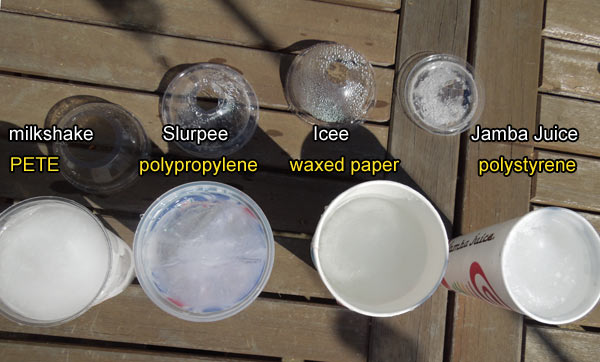
With that adjustment of methods, the experiment was ready to begin.

At 3pm on a hot Saturday afternoon, I placed all of the cups on a table outside. Each held an equal mass of ice. Using the nearest sharp thing, a drill bit, I poked two holes into each cup, which I assumed would remove the cold water from the equation.
The Results
In five hours, I had results!
The Jamba Juice cup won!

The milkshake cup, marked plastic #5, was polyethylene terephtalate (PETE). It had a chunk of ice remaining. It was about four ounces of solid ice.
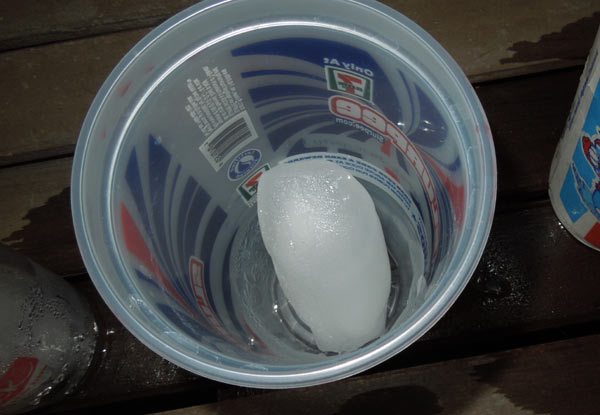
The Slurpee cup looked hilarious. A thin column of ice stood at the bottom.
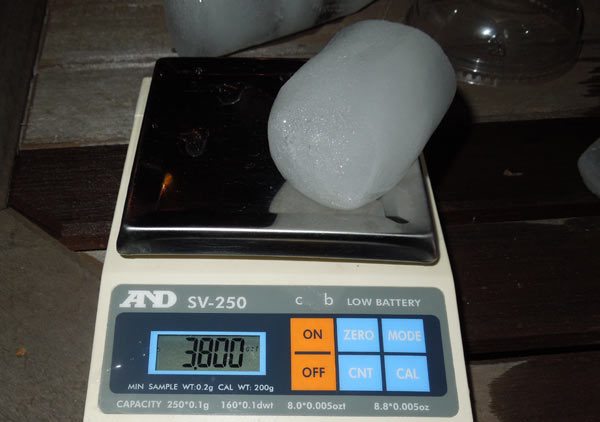
It was about four ounces of solid ice.
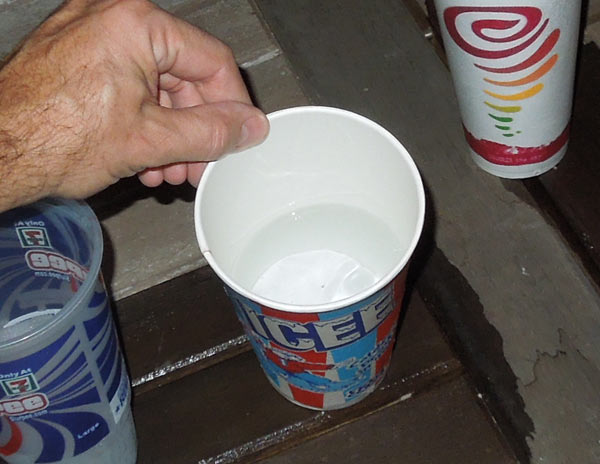
Something surprising had happened with the Icee cup. It had magically sealed itself, melting completely, but holding its melted water despite the two holes in the bottom. Somehow the paper fibers in the bottom of the cup had swelled enough to block the water from draining, or perhaps the wax had some unforseen effect on the drainage. It wasn't just a little puddle either. What appeared to be at least 12 ounces of water was still in the cup. There was no ice.
It's not often that I witness a miracle, and I'll never let another one pass unheeded. I drank the water.

When I tested the holes with a few ounces of tap water, they both allowed water to drip out.


The Icee cup ice had been compromised by this bath of liquid, speeding the melt process. So the melting result was ruined for the paper Icee cup.
The Jamba Juice cup had a large chunk of ice remaining.

Here are the numbers:
Slurpee Cup: 4.2 oz. (118g) ice remains
Milkshake Cup: 3 oz. (87g) ice remains
Jamba Juice: 6.9 oz. (195g) ice remains
A more informative result would be if I could tell you exactly how long it took for each ice cube to completely melt. I didn't collect that information, but I can estimate it.

The Icee Cup ice melted in less than 5 hours.
The Milkshake Cup (PETE) ice would have lasted 7 hours.
The Slurpee Cup (polyethylene) ice would have lasted 7.5 hours
The Jamba Juice Cup (polystyrene) ice would have lasted 9.5 hours
The ice weight and projected times don't translate directly to an acceptable drink consistancy or temperature, but they do confirm my hypothesis. A styrofoam cup is the superior vessel for an ice cold drink... unless an enchanted Icee cup is available.
You are invited to discuss this article on the Cockeyed.com Facebook page.
Cockeyed home page | Contact | Terms and Conditions | Updated October 2, 2012 Copyright 2012 Cockeyed.com












